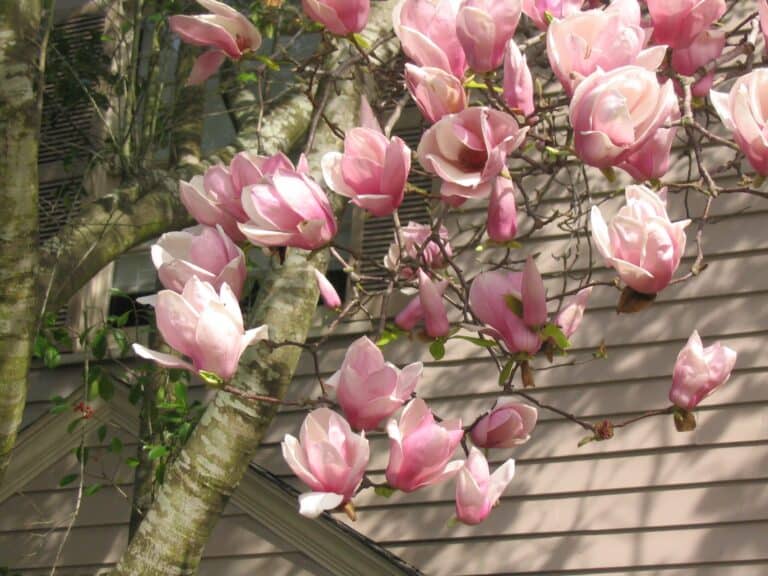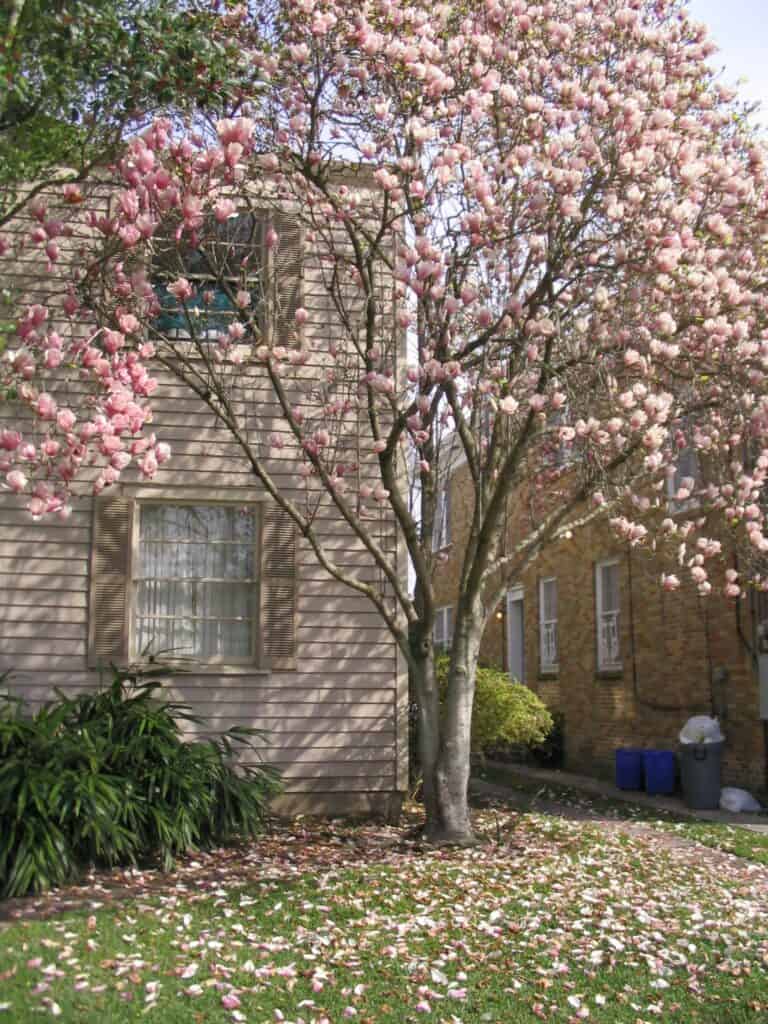No plant signals the approach of spring in New Orleans more beautifully than the Japanese magnolia. In late winter this deciduous plant transforms into a canopy of fragrant pink/white/purple blooms, a reminder that longer days and warm-season gardening is near.
Japanese magnolia blooms late winter to spring. This small deciduous tree is multi branched and can grow 20’ x 15′ on average. The saucer shaped flowers come in shades of pink, purple to white on bare gray branches. Its fragrant flowers average 4-6 inches across and bloom before the foliage appears. Also known as Saucer magnolia. This tree is an excellent specimen tree but also works well grouped with shrubs or foundation plantings.
Best time to plant is now. Plant in full sun to part shade from November to March. May be planted at other times but this can be stressful on the tree. Plant at soil level or slightly above in well drained fertile soil that is slightly acidic. Japanese magnolia will tolerate alkaline soils, add 2-3 inches of mulch and water in well. Fertilize in late winter with slow release or complete fertilizer after the first year in spring.

Magnolia x soulangeana
Water during hot/dry seasons every two weeks but do not keep wet. Performs poorly and may be stunted in heavy soils. Prune the tree when young to control the size and shape. Dan Gill recommends pruning out several of the trunks to about 3-5 trunks during the second or third year for a more attractive tree. Prune out lower stems on young trees.
Leafspot, mildew and leaf blight could be a problem for newly planted trees, use a fungal spray if needed. Flowers may be damaged during freezing temperatures.
Propagate Japanese magnolias by seeds, cuttings and grafting. Moderate growth rate.
Some recommended varieties:
- ‘Alba’ White flowers with pink shading.
- ‘Alexandra’ Large dark rosy-purple flowers
- ‘Susan’ more compact, shrubby rebloomer with reddish-violet, lemon scented flowers

Magnolia x soulangeana

By Karen Blackburn
Master Gardener of Greater New Orleans
Photo credits:
Dr. Heather Kirk-Ballard, LSU AgCenter, featured image
Dan Gill, retired horticulturist, LSU AgCenter

